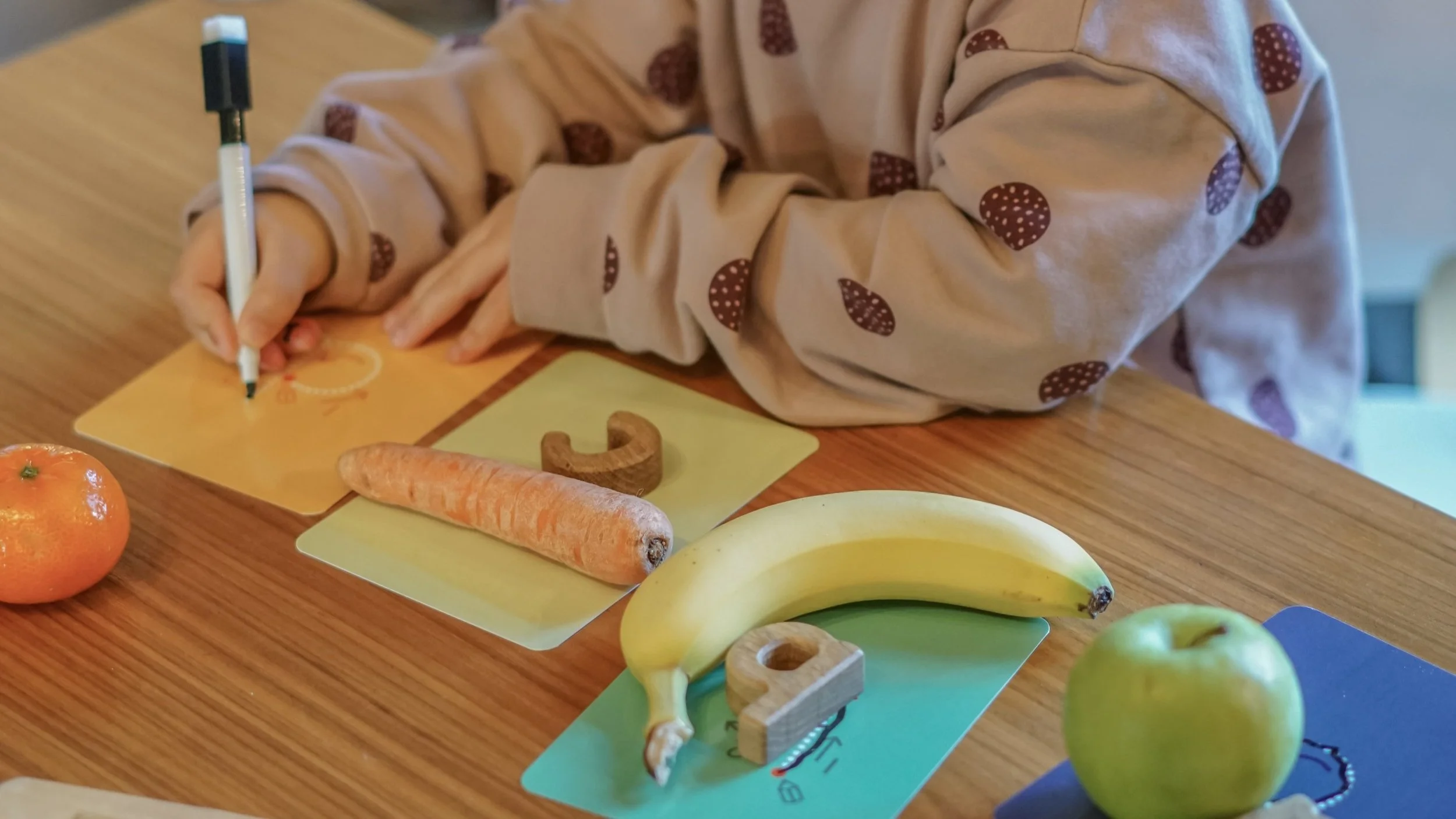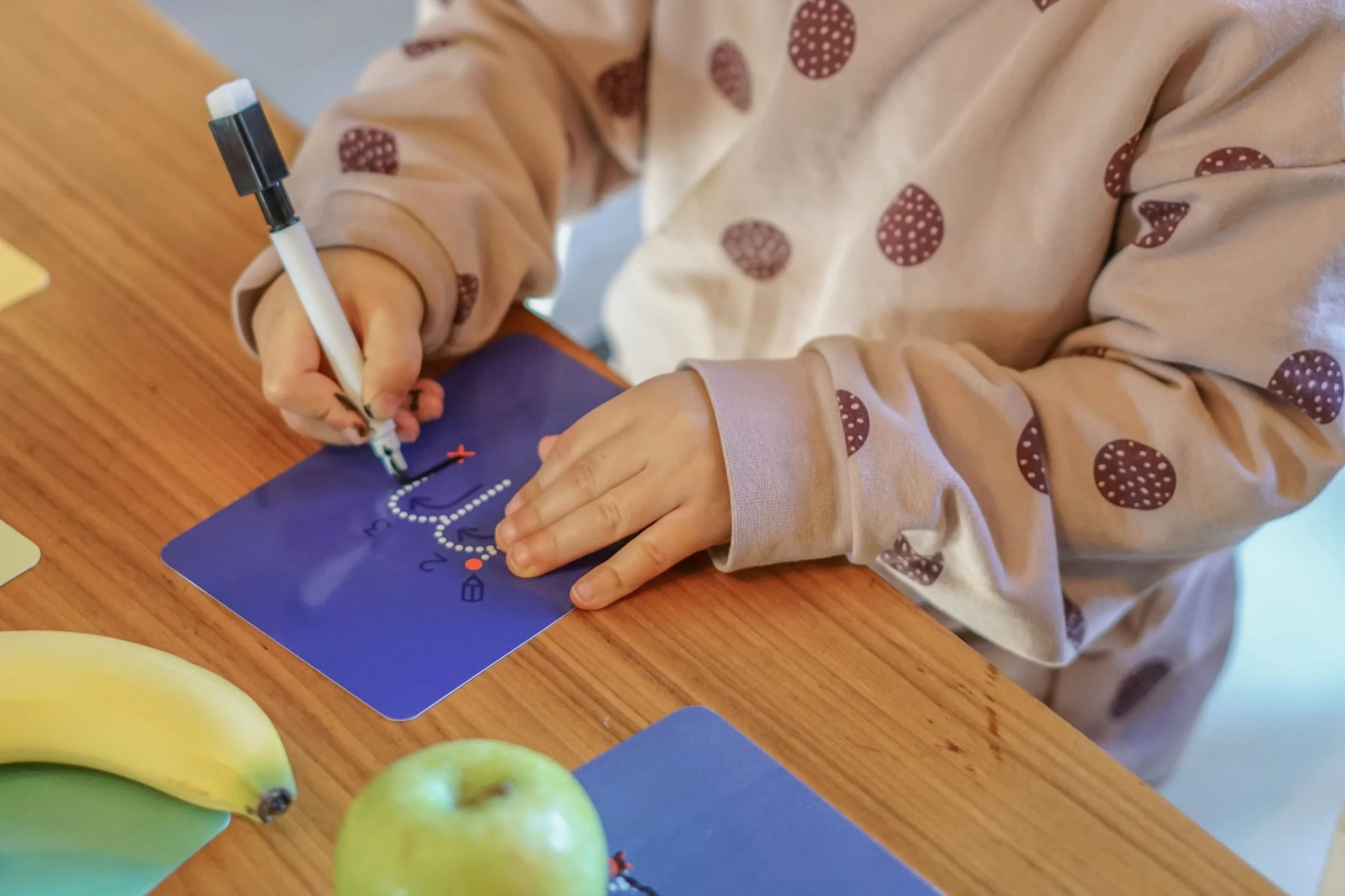Pre-Writing Activities
Before a child learns to write, they need to be able to do a number of things. They must have good hand strength and dexterity, core body strength, be able to cross the midline, have good bilateral arm and hand use and good hand eye coordination. Their pencil grip needs to have developed as well.
Most children don’t start writing their names until they are about 3-4 years old, but there are lots of activities they can do to help prepare them for this milestone.
Hand Strength and dexterity
Playdough
Playing with playdough is great for building hand strength. Rolling, squishing, moulding, breaking, and flattening all help to develop muscles that are used for fine motor movements. These muscles are very important for skills like cutting and writing.
We love using playdough stampers and rollers in our playdough play.
You can also get beautiful playdough kits from our favourite shop Organised Chaos with Kids.
Water Play
Show me a kid who doesn’t love playing with water! Transferring water by squeezing a sponge is a fun activity and strengthens little hands at the same time.
A refillable spray bottle is another way to improve grip and finger strength. Enlist your little one to help clean the windows or use a reusable Chinese Magic Cloth for some spray art.
Bubble Wrap
Most people enjoy popping bubble wrap and kids are no different. Encourage your child to pinch using the pads of their thumb (rather than the side) to strengthen their pinch.
Cutting activities
Cutting different materials such as paper, playdough, card, straws, ribbon, and fabric will have different amounts of resistance to make hands stronger.
To introduce cutting, we used Easi-Grip scissors that are also recommended by occupational therapists. See our activity post on learning to use scissors.
Pencil Grasp Development
A child’s pencil grip develops in stages.
Fisted Grasp – Your toddler holds the crayon with his whole hand with the drawing end sticking out the pinkie side with the scribbling movement from the shoulder.
Digital Pronate Grasp – The crayon is held in the hand, so the drawing end is held on the thumb side of the hand.
Quadrupod Grasp – The crayon is held between the thumb, pointer finger, middle finger, and ring finger.
Static Tripod Grasp – The pencil is held with the thumb and pointer finger, and it rest on the middle finger.
Dynamic Tripod Grasp – The pencil is held the same way as in the static tripod grasp, but the movement comes from the fingers and the hand.
We found that by using short crayons and drawing in the bath, it helped with developing a correct pencil grasp and holding the crayon in a lower position. Have a look at our favourite bath crayons.
For more information on pencil grasp development and related ages, The OT Toolbox has a great article.
Letter and Number Formation
Another important aspect of writing is knowing their letters and number. These activities can help with focusing on letter and number formation.
Writing Cards
Writing cards that wipe clean are a great tool for practicing letters. They can also be used with playdough to form the letters. The kneading and rolling of playdough will help to improve hand strength.
Letter/number board
Letter boards can be a good for tracing, but my daughter preferred using it for playdough shape forming and for tracing with chickpeas. The bonus is that it also becomes a fine motor activity.
Salt Drawing
Salt trays are a lovely sensory activity. It’s also a good way to practice drawing letters and numbers in a non-permanent way for those who get frustrated by not being able to write perfectly. It can be done with a finger or a paintbrush.
*This post contains affiliate links. We may earn a small commission when you make a purchase through links at no additional cost to you.







